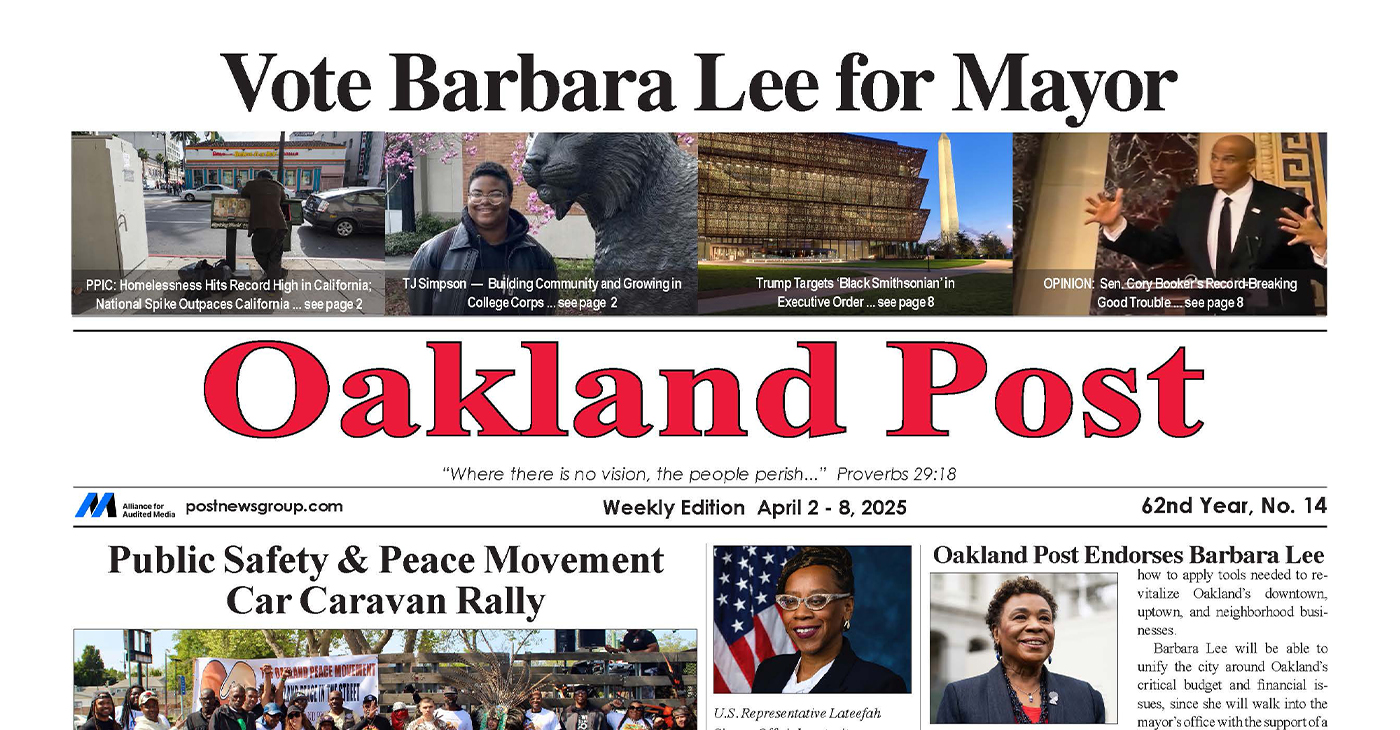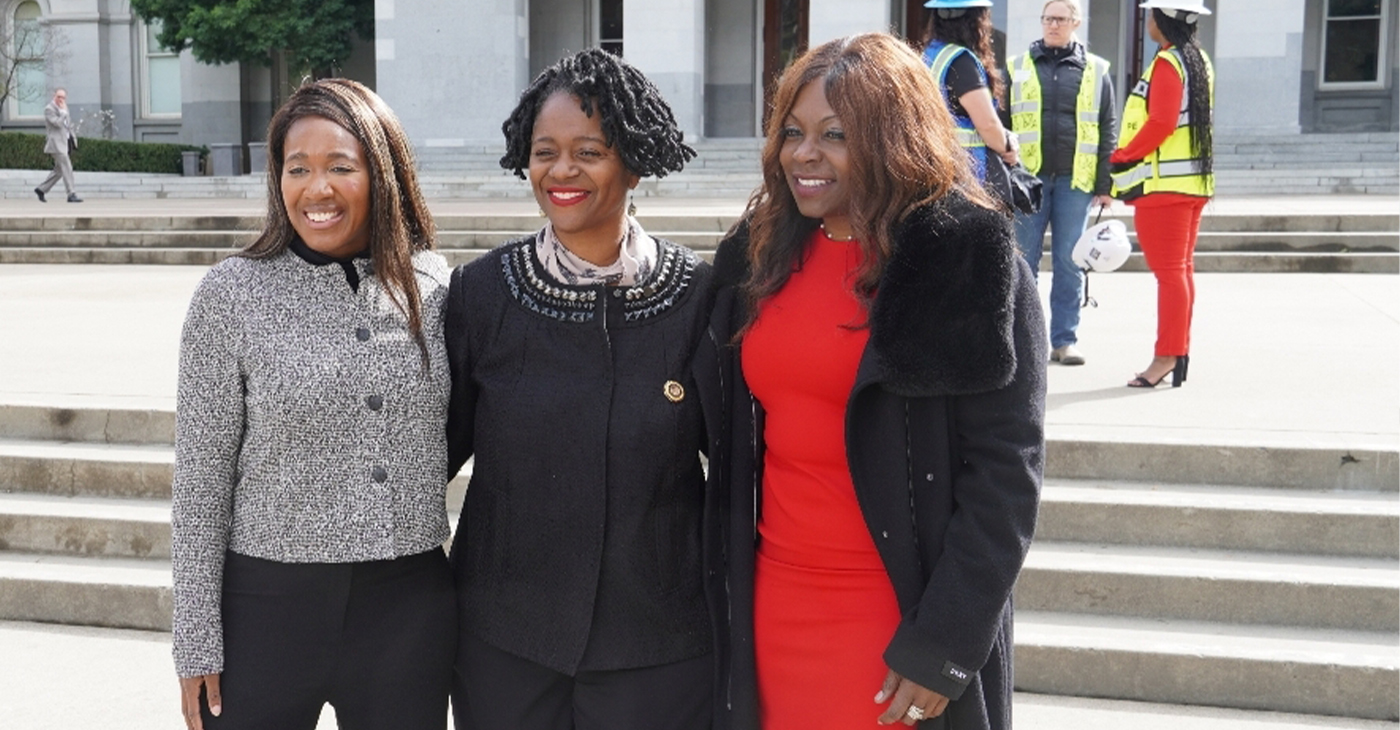California Black Media
What Are Schoolteachers Thinking? Report Gives Insights
What teachers think and experience in the public education system is explored in a new report by the National Alliance for Public Charter Schools (NAPCS). The Harris Poll, a market research and consulting firm, carried out the survey of over 1,200 public schoolteachers from both charter and district schools for the report.

By Antonio Ray Harvey
California Black Media
What teachers think and experience in the public education system is explored in a new report by the National Alliance for Public Charter Schools (NAPCS).
The report, named “Listen to Your Teacher: An Analysis of Teacher Sentiment on the State of Public Education,” was authored by NAPCS’s vice president of Communications and Marketing, Debbie Veney.
The Harris Poll, a market research and consulting firm, carried out the survey of over 1,200 public schoolteachers from both charter and district schools for the report.
“I think the results of The Harris Poll raises the important point that the teacher’s voice is critical in determining the challenges we face in education, particularly in the aftermath of the pandemic,” said Leona Matthews, Senior Director of Literacy Programs for Green Dot Public Schools California.
Green Dot Public Schools is a non-profit organization whose mission is to help transform public education, so all students graduate prepared for college, leadership and life. The U.S. Department of Education has featured Green Dot as a national leader in school turnarounds.
“It makes it clear that charter schools provide the kind of small school, values driven environment that empowers teachers to meet the diverse needs of the students we serve.”
The NAPCS commissioned the survey to gain more insight into the teachers’ experiences, opinions, and motivations for entering, staying in, or leaving the profession.
The research was conducted online from May 10 to May 30, 2023.
“Next to parents, teachers are the backbone of education. It is valuable to have insight into how they feel in today’s climate and find out how we can better support their heroic work in and outside the classroom,” stated Nina Rees, president and CEO of the NAPCS. “Although we certainly have a special interest in charter schoolteachers, we care deeply about the experience of all public schoolteachers.”
Based on the study, 10 Los Angeles-based Green Dot Public Schools helped students increase proficiency rates in both math and English during the 2022-2023 year. Four schools exceeded their pre-pandemic proficiency rates.
Charter schools are publicly funded independent schools established by teachers, parents, or community groups under the terms of a charter with a local or national authority.
They are governed under a legislative contract — a charter — with the state, school district, or another entity, according to the National Center for Education Statistics (NCES), a statistical agency of the U.S. Department of Education (USDE).
In April 2020, the NCES and Institute of Education Sciences released a 71-page report that Black educators were 11% of the teachers in the country’s charter schools during the 2017-2018 academic year.
Overall, Black educators make up 11% of the teachers in city schools but only 5.5% of the teachers in suburban schools and 3.6% in rural schools. The nation’s average of Black educators in the classroom is 6.3%, according to the report.
Veney participated in a podcast focused on the study. She said that the importance of the survey was to get the 1,211 teachers to provide their perspectives (811 school district teachers and 400 charter school educators).
“This is the most important topic right now facing public education. We’re hearing all these headlines about teacher shortages, teacher resignations, and teacher dissatisfaction,” Veney said. “It really felt like we were not listening enough to what teachers were actually saying about this (or) if there was a lot of talk about teachers but not enough talk to teachers.”
The key data from the survey indicate the following trends:
Teachers Agree Families and Students Should Have Education Choice — About 4 out of 5 teachers agree that regardless of its politicized nature, public school choice is important for both families and teachers (79% of all public schoolteachers; 87% of charter schoolteachers and 78% of district schoolteachers).
Something Has to Change — Public school teachers cite student behavior and discipline issues (74%) as the top challenge they believe teachers currently face, followed by pay (65%).
There’s Something Special About the Experience of Charter Schoolteachers — Eighty percent of charter schoolteachers say they are as or more motivated than when they initially entered the profession (vs. 34% among public school teachers).
Aligning with Culture — Ninety-six percent of charter schoolteachers report feeling aligned with their current school’s culture in terms of values and beliefs about education. About 75% of district schoolteachers feel this way.
Keep Politics Out of the Classroom — Teachers say they just want to teach (94%) and report feeling like they are caught in the crossfire of a culture war (91%).
“It amplifies a needed conversation about our educational system, how we can best support teachers, and ultimately our students.” Matthews said of the report.
Charter schools historically serve proportionately more students of color and more students from low-income communities than district schools. For a stretch of 16 years (2005-06 to 2020-21 school years), charter schools have consistently had a higher portion of students of color compared to district schools, according to the National Alliance for Public Charter Schools (NAPCS).
During the 2005-2006 school year, a total of 196,851 students were enrolled in California charter schools, according to data provided by NAPCS. The movement continued each year as enrollment reached 692,783 pupils by the end of the 2020-2021 calendar year.
As of the beginning of the 2022–23 school year, more than 1,300 charter schools and seven all-charter districts are operating in California, according to the California Department of Education (CDE).
Alameda County has 80 charter schools; San Bernardino County has 52; Los Angeles County has 275; San Diego County has 124; Sacramento County has 56; and San Francisco has 16 public charter schools, according to CDE.
“I am really delighted to say that a lot of what we found is consistent and similar across both types of school settings,” said Veney, referring to the charter schools and district schools.
Activism
Oakland Post: Week of April 2 – 8, 2025
The printed Weekly Edition of the Oakland Post: Week of April 2 – 8, 2025

To enlarge your view of this issue, use the slider, magnifying glass icon or full page icon in the lower right corner of the browser window.
Activism
Oakland Post: Week of March 28 – April 1, 2025
The printed Weekly Edition of the Oakland Post: Week of March 28 – April 1, 2025

To enlarge your view of this issue, use the slider, magnifying glass icon or full page icon in the lower right corner of the browser window.
Activism
Sen. Lola Smallwood-Cuevas Honors California Women in Construction with State Proclamation, Policy Ideas
“Women play an important role in building our communities, yet they remain vastly underrepresented in the construction industry,” Smallwood-Cuevas stated. “This resolution not only recognizes their incredible contributions but also the need to break barriers — like gender discrimination.

By Antonio Ray Harvey, California Black Media
To honor Women in Construction Week, Sen. Lola Smallwood-Cuevas (D-Los Angeles), a member of the California Legislative Black Caucus (CLBC), introduced Senate Concurrent Resolution (SCR) 30 in the State Legislature on March 6. This resolution pays tribute to women and highlights their contributions to the building industry.
The measure designates March 2, 2025, to March 8, 2025, as Women in Construction Week in California. It passed 34-0 on the Senate floor.
“Women play an important role in building our communities, yet they remain vastly underrepresented in the construction industry,” Smallwood-Cuevas stated. “This resolution not only recognizes their incredible contributions but also the need to break barriers — like gender discrimination.
Authored by Assemblymember Liz Ortega (D-San Leandro), another bill, Assembly Concurrent Resolution (ACR) 28, also recognized women in the construction industry.
The resolution advanced out of the Assembly Committee on Rules with a 10-0 vote.
The weeklong event coincides with the National Association of Women In Construction (NAWIC) celebration that started in 1998 and has grown and expanded every year since.
The same week in front of the State Capitol, Smallwood, Lt. Gov. Eleni Kounalakis, Assemblymember Josh Hoover (R-Folsom), and Assemblymember Maggie Krell (D-Sacramento), attended a brunch organized by a local chapter of NAWIC.
Two of the guest speakers were Dr. Giovanna Brasfield, CEO of Los Angeles-based Brasfield and Associates, and Jennifer Todd, President and Founder of LMS General Contractors.
Todd is the youngest Black woman to receive a California’s Contractors State License Board (A) General Engineering license. An advocate for women of different backgrounds, Todd she said she has been a woman in construction for the last 16 years despite going through some trying times.
A graduate of Arizona State University’s’ Sandra Day O’Connor College of Law, in 2009 Todd created an apprenticeship training program, A Greener Tomorrow, designed toward the advancement of unemployed and underemployed people of color.
“I always say, ‘I love an industry that doesn’t love me back,’” Todd said. “Being young, female and minority, I am often in spaces where people don’t look like me, they don’t reflect my values, they don’t reflect my experiences, and I so persevere in spite of it all.”
According to the U.S. Bureau of Labor Statistics, only 11.2% of the construction workforce across the country are female. Overall, 87.3% of the female construction workers are White, 35.1% are Latinas, 2.1% are Asians, and 6.5% are Black women, the report reveals.
The National Association of Home Builders reported that as of 2022, the states with the largest number of women working in construction were Texas (137,000), California (135,000) and Florida (119,000). The three states alone represent 30% of all women employed in the industry.
Sen. Susan Rubio (D-Baldwin Park) and the California Legislative Women’s Caucus supported Smallwood-Cuevas’ SCR 30 and requested that more energy be poured into bringing awareness to the severe gender gap in the construction field.
“The construction trade are a proven path to a solid career. and we have an ongoing shortage, and this is a time for us to do better breaking down the barriers to help the people get into this sector,” Rubio said.
-

 Activism2 weeks ago
Activism2 weeks agoWe Fought on Opposite Sides of the Sheng Thao Recall. Here’s Why We’re Uniting Behind Barbara Lee for Oakland Mayor
-

 #NNPA BlackPress2 weeks ago
#NNPA BlackPress2 weeks agoRev. Dr. Jamal Bryant’s Black Church Target Boycott Mobilizes 150,000
-

 Activism4 weeks ago
Activism4 weeks agoOakland Post: Week of March 5 – 11, 2025
-

 Activism3 weeks ago
Activism3 weeks agoSan Francisco Is Investing Millions to Address Food Insecurity. Is Oakland Doing the Same?
-

 #NNPA BlackPress4 weeks ago
#NNPA BlackPress4 weeks agoTrump Moves to Dismantle Education Department
-

 #NNPA BlackPress2 weeks ago
#NNPA BlackPress2 weeks agoRecently Approved Budget Plan Favors Wealthy, Slashes Aid to Low-Income Americans
-

 #NNPA BlackPress4 weeks ago
#NNPA BlackPress4 weeks agoFighting to Keep Blackness
-

 Activism2 weeks ago
Activism2 weeks agoFaith Leaders Back Barbara Lee for Mayor, Criticize Candidate Loren Taylor for Dishonest Campaigning
















































